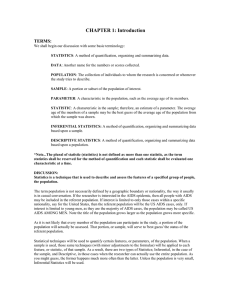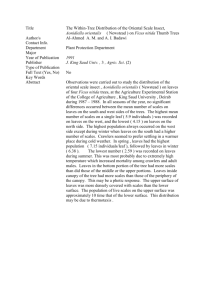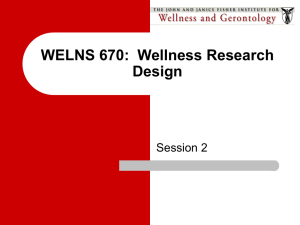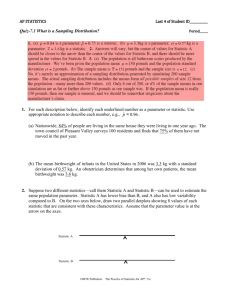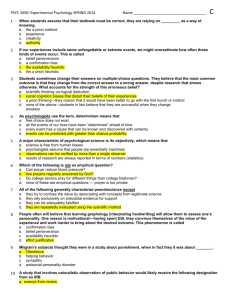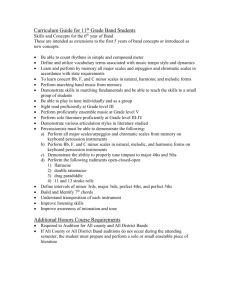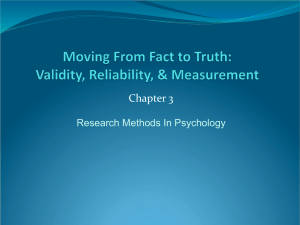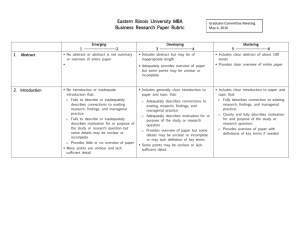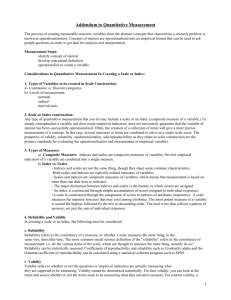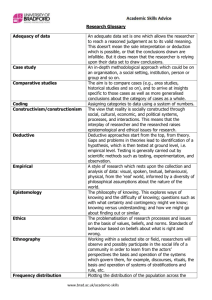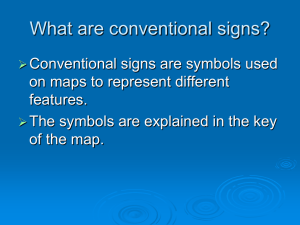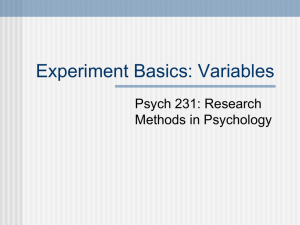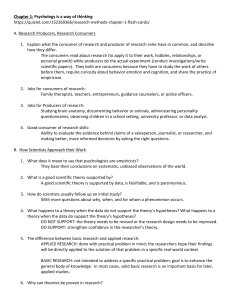What is Test Theory
advertisement
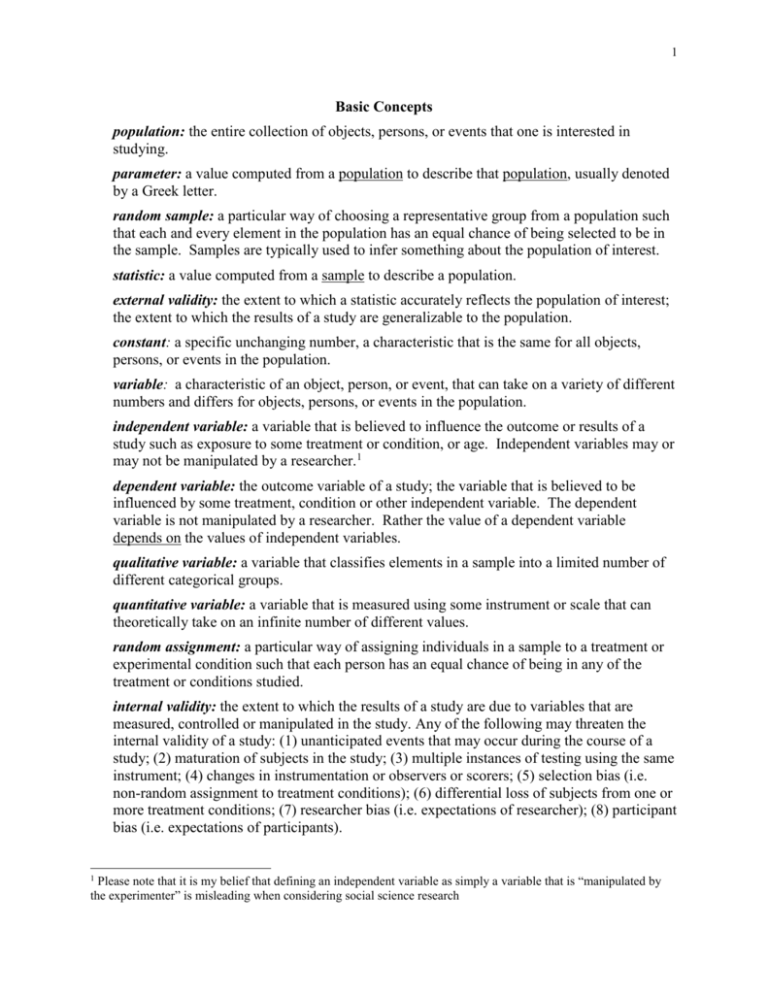
1 Basic Concepts population: the entire collection of objects, persons, or events that one is interested in studying. parameter: a value computed from a population to describe that population, usually denoted by a Greek letter. random sample: a particular way of choosing a representative group from a population such that each and every element in the population has an equal chance of being selected to be in the sample. Samples are typically used to infer something about the population of interest. statistic: a value computed from a sample to describe a population. external validity: the extent to which a statistic accurately reflects the population of interest; the extent to which the results of a study are generalizable to the population. constant: a specific unchanging number, a characteristic that is the same for all objects, persons, or events in the population. variable: a characteristic of an object, person, or event, that can take on a variety of different numbers and differs for objects, persons, or events in the population. independent variable: a variable that is believed to influence the outcome or results of a study such as exposure to some treatment or condition, or age. Independent variables may or may not be manipulated by a researcher.1 dependent variable: the outcome variable of a study; the variable that is believed to be influenced by some treatment, condition or other independent variable. The dependent variable is not manipulated by a researcher. Rather the value of a dependent variable depends on the values of independent variables. qualitative variable: a variable that classifies elements in a sample into a limited number of different categorical groups. quantitative variable: a variable that is measured using some instrument or scale that can theoretically take on an infinite number of different values. random assignment: a particular way of assigning individuals in a sample to a treatment or experimental condition such that each person has an equal chance of being in any of the treatment or conditions studied. internal validity: the extent to which the results of a study are due to variables that are measured, controlled or manipulated in the study. Any of the following may threaten the internal validity of a study: (1) unanticipated events that may occur during the course of a study; (2) maturation of subjects in the study; (3) multiple instances of testing using the same instrument; (4) changes in instrumentation or observers or scorers; (5) selection bias (i.e. non-random assignment to treatment conditions); (6) differential loss of subjects from one or more treatment conditions; (7) researcher bias (i.e. expectations of researcher); (8) participant bias (i.e. expectations of participants). Please note that it is my belief that defining an independent variable as simply a variable that is “manipulated by the experimenter” is misleading when considering social science research 1 2 descriptive statistics: methods which provide a concise description of a collection of quantitative data or information. inferential statistics: methods used to make inferences to a population from observations from a sample Scales of Measurement Measurement can be thought of as the application of specific procedures for assigning numbers to a variable in order to represent different qualities or attributes of the variable. There are three properties of different scales of measurement: 1. Magnitude/Order 2. Equal Intervals 3. Absolute Zero Four different scales have been defined based on these three different scales of measurement: 1. Nominal – does not possess any of the three properties of measurement scales. Simply categorizes variables into some unordered group. 2. Ordinal – only possesses the property of magnitude/order. Allows variables to be ordered in some meaningful way, but differences between two consecutive values are not equal. 3. Interval – possess both the property of magnitude/order and of equal intervals. Equal differences between two variables from different points of the scale can be interpreted in an identical manner. 4. Ratio – possess all three properties of measurement scales. Has a true zero point on the scale that represents absence of the trait or variable being measured.

